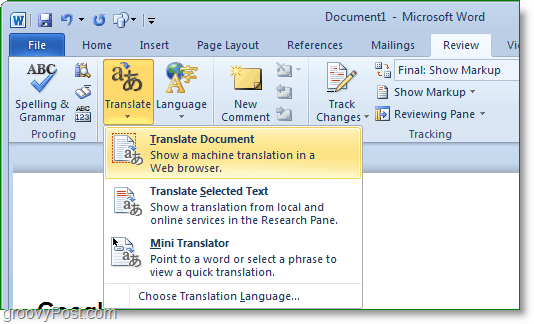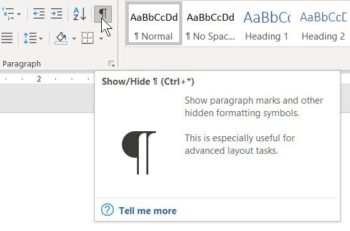
Microsoft Office is an office suite of desktop applications, servers and services for the Microsoft Windows and OS X operating systems. Office contained Microsoft Word, Microsoft Excel and Microsoft PowerPoint. Over the years, Office applications have grown substantially closer with shared features such as a common spell checker

- Microsoft Editor goes beyond checking spelling and grammar so you can write with confidence. Get intelligent suggestions in the Editor Overview pane in Word and let Editor assist you across documents, email, and on the web.
- Collaborate for free with an online version of Microsoft Word. Save documents in OneDrive. Share them with others and work together at the same time.
- In Microsoft Word or Excel, open the document that you want to sign. In the word document or worksheet, place you cursor (pointer) where you want the signature line to appear. On the Insert tab, in the Text section, click Signature Line Microsoft Office Signature Line. In the Signature Setup window, enter the information that.
The current versions are Office 2013 for Windows, released on October 11, 2012. A 60-day trial version of Office 2013 Professional Plus was released for download.
Bring your ideas to life with more customizable templates and new creative options when you subscribe to Microsoft 365. Browse Templates. Blocky event flyer Word Open mic night Word Children's Valentine's Day flyer Word Explore premium templates.
Microsoft Office 2016 can read PDF files, open VCF files and open DOC and DOCX files.
Microsoft Office 2016 2101.13628.20274 on 32-bit and 64-bit PCs
This download is licensed as shareware for the Windows operating system from office software and can be used as a free trial until the trial period ends (after an unspecified number of days). The Microsoft Office 2101.13628.20274 demo is available to all software users as a free download with potential restrictions and is not necessarily the full version of this software.Filed under:- Microsoft Office 2016 Download
- Major release: Microsoft Office 2016 2101.13628
- Document Editing Software
You can use your DigiCert® Document Signing Certificate to add a visible digital signature inside a Word document or Excel workbook. Your signature appears within the document to let recipients know that the document was signed. For more information about DigiCert® Document Signing Certificates, see DigiCert Document Signing Certificates.
You can also use your DigiCert® Document Signing Certificate to add an invisible digital signature to a Word document, Excel workbook, and PowerPoint presentation. See How to Sign Microsoft Office Documents: Office 2013, 2010, and 2007.
How to Create a Signature inside a Microsoft Word Document or Excel Workbook
Microsoft Office 2013
The screenshots provided in this instruction are from Microsoft word and are almost identical to the screens in Excel.

Microsoft Documents Free Download
Plug in your Document Signing Certificate token.
In Microsoft Word or Excel, open the document that you want to sign.
In the word document or worksheet, place you cursor (pointer) where you want the signature line to appear.
Click Insert.
On the Insert tab, in the Text section, click Signature Line > Microsoft Office Signature Line.
In the Signature Setup window, enter the information that you want to appear below the signature line:
Suggested signer Enter the signer’s full name. Suggested signer’s title Enter the signer’s job title. Suggested signer’s email address Enter the signer’s email address. Instruction to the signer Add any necessary instructions for the signer. Allow the singer to add comments in the sign dialog Check this box to permit the signer to type a purpose for signing. Show sign date in signature line Check this box if you want the signature date to appear with the signature. When you are finish entering your information, click OK.
The signature field should appear in the word document or worksheet.
Note: You can drag-and-drop the signature field to position it where you want on the page or in the worksheet.
To insert your signature, right-click on the signature line and then, in the drop-down list, click Sign.
In the Sign window, in the X box, type your name and/or click Select Image to choose a signature image.
In the Commitment Type drop-down list, select the commitment type that best represents the signer’s role.
None
Created and approved this document
Approved this document
Created this document
In the Purpose for signing this document box, enter your purpose for signing the document.
To add information about the signer, click Details. Then, in the Additional Signing Information window, enter the information and then, click OK.
Next, in the Sign window, click Change.
In the Windows Security window, select the certificate that you want to use to sign the document and then, click OK.
In the Sign window, click Sign.
If you are using a DigiCert® Document Signing Certificate, enter your token password, and then click OK.
In the Signature Confirmation window, read the message and then, click OK.
Note: If you checked Don’t show this message again, this window does not appear.
The signature should be inserted in your document.
To verify the signature, right-click on the signature line and then, click Signature Details.
Microsoft Office 2010
The screenshots provided in this instruction are from Microsoft word and are almost identical to the screens in Excel.
Plug in your Document Signing Certificate token.
In Microsoft Word or Excel, open the document that you want to sign.
In the word document or worksheet, place you cursor (pointer) where you want the signature line to appear.
Click Insert.
On the Insert tab, in the Text section, click Signature Line > Microsoft Office Signature Line.
If the Microsoft Office digital signatures… window appears, click OK.
In the Signature Setup window, enter the information that you want to appear below the signature line:
Suggested signer Enter the signer’s full name. Suggested signer’s title Enter the signer’s job title. Suggested signer’s email address Enter the signer’s email address. Instruction to the signer Add any necessary instructions for the signer. Allow the singer to add comments in the sign dialog Check this box to permit the signer to type a purpose for signing. Show sign date in signature line Check this box if you want the signature date to appear with the signature. When you are finish entering your information, click OK.
The signature field should appear in the word document or worksheet.
Note: You can drag-and-drop the signature field to position it where you want on the page or in the worksheet.
To insert your signature, right-click on the signature line and then, in the drop-down list, click Sign.
If the Microsoft Office digital signatures… window appears, click OK.
In the Sign window, in the X box, type your name and/or click Select Image to choose a signature image.
In the Purpose for signing this document box, enter your purpose for signing the document.
Next, in the Sign window, click Change.
In the Windows Security window, select the certificate that you want to use to sign the document and then, click OK.
In the Sign window, click Sign.
If you are using a DigiCert® Document Signing Certificate, enter your token password, and then click OK.
In the Signature Confirmation window, read the message and then, click OK.
Note: If you checked Don’t show this message again, this window does not appear.
The signature should be inserted in your document.
To verify the signature, right-click on the signature line and then, click Signature Details.
Microsoft Office 2007
The screenshots provided in this instruction are from Microsoft word and are almost identical to the screens in Excel.
Microsoft Documentum
Plug in your Document Signing Certificate token.
In Microsoft Word or Excel, open the document that you want to sign.
In the word document or worksheet, place you cursor (pointer) where you want the signature line to appear.
Click Insert.
On the Insert tab, in the Text section, click Signature Line > Microsoft Office Signature Line.
If the Microsoft Office digital signatures… window appears, click OK.
In the Signature Setup window, enter the information that you want to appear below the signature line:
Suggested signer Enter the signer’s full name. Suggested signer’s title Enter the signer’s job title. Suggested signer’s email address Enter the signer’s email address. Instruction to the signer Add any necessary instructions for the signer. Allow the singer to add comments in the sign dialog Check this box to permit the signer to type a purpose for signing. Show sign date in signature line Check this box if you want the signature date to appear with the signature. When you are finish entering your information, click OK.
The signature field should appear in the word document or worksheet.
Note: You can drag-and-drop the signature field to position it where you want on the page or in the worksheet.
To insert your signature, right-click on the signature line and then, in the drop-down list, click Sign.
If the Microsoft Office digital signatures… window appears, click OK.
In the Sign window, in the X box, type your name and/or click Select Image to choose a signature image.
In the Purpose for signing this document box, enter your purpose for signing the document.
Next, in the Sign window, click Change.
In the Windows Security window, select the certificate that you want to use to sign the document and then, click OK.
In the Sign window, click Sign.
If you are using a DigiCert® Document Signing Certificate, enter your token password, and then click OK.
In the Signature Confirmation window, read the message and then, click OK.
Note: If you checked Don’t show this message again, this window does not appear.
The signature should be inserted in your document.
To verify the signature, right-click on the signature line and then, click Signature Details.
